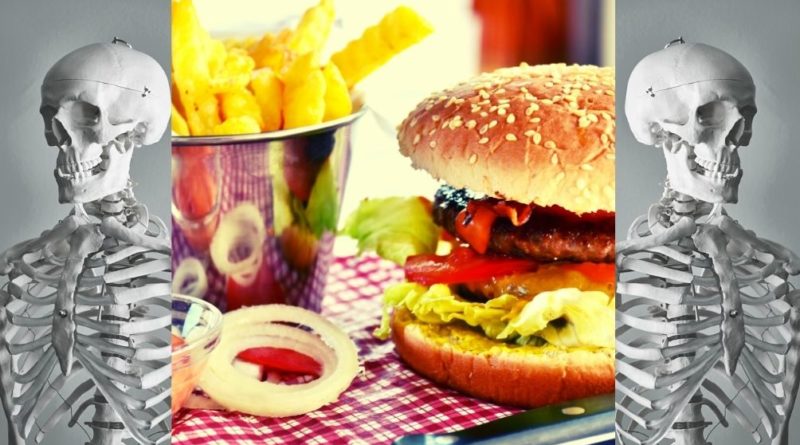Boning Up on Fats and Skeletal Health: Part One
We all know that diet plays a key role in bone strength, with calcium and vitamin D playing prominent roles. What about fat though? Yes, it is possible to modify how much fat you consume, as well as the types of fats, to enhance bone health. Whether you’re currently a spring chicken or mature hen, it is something worth considering. It is estimated that 1 in 3 women and 1 in 5 men (or more) will get a fracture due to bone weakness during their lifetime. Moreover, people’s lifestyles often suffer for long periods after a fracture. For example, a previously active relative of mine had a fall almost two years ago. Because the fracture and healing process was complex, they are still struggling to get around with a walker to this day. Even simple tasks in daily life, including reaching, twisting, and bending can be impeded. Here we take a broad look at the impact of fats. Stay tuned next week for a closer look at the especial effects of omega-3 and 6 fatty acids.
Key points:
- Eating excess total fat or saturated fat is associated with poorer bone health.
- Inflammation, impeded calcium absorption, increased breakdown and excretion of minerals, or displaced nutrient intakes are possible mediators of this effect.
- Higher polyunsaturated fat intakes (relative to saturated) are generally considered to promote bone health
Bone Health 101
The graphic below illustrates the structure of bone, from healthy bone through osteopenia (weakened but not yet osteoporotic bone) to osteoporosis and severe osteoporosis. As the bone becomes increasingly porous and hard tissue is lost, it is less resistant to fracture.
Image credit: Neokryuger at bigstock.com
While 1 in 3 women and 1 in 5 men experience osteoporotic fractures, it should be noted that there is substantial variation in their prevalence around the world. For example, women from rural parts of Asia have been reported to experience half the fractures of caucasian women. However, city-dwellers have similar rates as white American women. In the absence of data proving why this phenomenon occurs, it would appear that changes in lifestyle may be a factor. This may include (but not be limited to) dietary fat intake.
Just total fat and bones
There are definite associations between increased fat intake and decreased bone mineral density, and increased risk of fractures. Because this is only association data though, there is no clear indication of ‘how much’ fat might begin to be too much. For this reason, I’d recommend you stick to the general recommendations of getting 20-35% of your calories from fat.
It seems the impact of fat on bone health may be mediated by inflammatory processes. There is increasing evidence that inflammation may contribute to metabolic bone diseases such as osteoporosis. This is because cells that create bone and those that break it down are both regulated by the balance between proinflammatory and anti-inflammatory molecules. When the balance is tipped towards pro-inflammatory molecules, net breakdown wins.

Other theories about how high fat intakes cause breakdown include:
- Increased intake of fats (+/- sugars) lead to high insulin levels, which leads to increased loss of calcium and magnesium in the urine
- Calcium binds to fat, which reduces its absorption from the small intestine (the chemical structure of the particular fat/s in the gut appear to moderate the strength of this effect)
- Many dietary sources of fat are also good sources of retinol (a form of vitamin A). Hence people may have high retinol intakes- which can increase the breakdown and release of bone minerals into the blood
- A large amount of fat may be consumed to the exclusion of other food groups and nutrients crucial to bone health
Although these are quite reasonable sounding, the little experimental proof means they are still just theories.
All fats are not made equal…
It is not just total fat intake, but the intake of specific fats that seem to play a role. As you’ll see, there is dispute over the role of each fat on the bone mineral density of different body parts.
Saturated fat intake and bones
There’s been an observed association between increased saturated fat (primarily animal fats) and increased fracture risk, particularly of the hip. Cell culture studies have also suggested saturated fat suppresses the activity of bone-forming cells. Stick to recommendations of saturated fat (combined with trans fats) providing less than 10% of your caloric intake.

Monounsaturated fat intake and bones
Some studies show there’s an association between greater monounsaturated fat and lower bone density in the hip. On the other hand, use of olive oil- which is also a good source of monounsaturated fat- has been associated with improved bone density in the wrist.
Polyunsaturated Fatty Acid (PUFA) intake and bones
Studies with humans generally suggest greater intake of total PUFAs, total omega-3’s and total omega-6’s help with bone mineral density and risk of fracture. So generally, asides from the benefits to your heart, consuming more of your fat from unsaturated sources (plants or fish) than from saturated sources is advisable.
It’s also worth remembering that there are a number of PUFA’s- that differ in structure and chemical properties. Thus it’s not surprising that they may each have individual effects on bone. If this was not accounted for, it may have impacted on the different findings between studies. For example, in contrast to the general consensus, limited research has linked polyunsaturated fat intake with lower bone mineral density in the hip. Either way, further research should clarify this.
Stay tuned for more on the roles of different PUFA’s next week.
The Verdict
Excess total fat or saturated fat intake seems to compromise bone health. Getting no more than 20-35% of your calories from fat, limiting your saturated fat intake (from meat, takeaway and treats) to 10% and optimising polyunsaturated fat intake could protect your bones. The impact of monounsaturated fats is not clear.
How do you think your fat intake compares with these recommendations?
References
Abdelhamid, A., Hooper, L., Sivakaran, R. et al. (2019) The Relationship Between Omega-3, Omega-6 and Total Polyunsaturated Fat and Musculoskeletal Health and Functional Status in Adults: A Systematic Review and Meta-analysis of RCTs. Calcif Tissue Int 105, 353–372 https://doi.org/10.1007/s00223-019-00584-3
Australian Government National Health and Medical Research Council and Ministry of Health New Zealand. (Updated 2014, April 9). Nutrient Reference Values for Australia and New Zealand: Fats: Total Fat and Fatty Acids. https://www.nrv.gov.au/nutrients/fats-total-fat-fatty-acids
Australian Government National Health and Medical Research Council and Ministry of Health New Zealand. (Updated 2014, April 2). Nutrient Reference Values for Australia and New Zealand: Macronutrient Balance. https://www.nrv.gov.au/chronic-disease/macronutrient-balance
Karpouzos, A., Diamantis, E., Farmaki, P., Savvanis, S., and Troupis, T. (2017). Nutritional Aspects of Bone Health and Fracture Healing. Journal of Osteoporosis |Article ID 4218472 | 10 pages | https://doi.org/10.1155/2017/4218472
